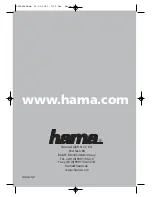
mounted, the alarm “Safe Torque Off [A68]” is
displayed.
1.2 Send reset signal (via Bus, Digital I/O, or
[Reset] key). The test step is passed if the motor
remains in the Safe Torque Off state, and the
mechanical brake (if connected) remains
activated.
1.3 Reapply 24 V DC to terminal 37. The test step
is passed if the motor remains in the coasted
state, and the mechanical brake (if connected)
remains activated.
1.4 Send reset signal (via Bus, Digital I/O, or
[Reset] key). The test step is passed if the motor
becomes operational again.
The commissioning test is passed if all 4 test steps 1.1, 1.2,
1.3 and 1.4 are passed.
Case 2: Automatic Restart of Safe Torque Off is wanted
and allowed (i.e. Safe Torque Off only where
5-19 Terminal 37 Safe Stop
is set to [3], or combined Safe
Torque Off and MCB112 where
5-19 Terminal 37 Safe
Stop
is set to [7] or [8]):
2.1 Remove the 24 V DC voltage supply to
terminal 37 by the interrupt device while the
motor is driven by the FC 102 (i.e. mains supply is
not interrupted). The test step is passed if the
motor reacts with a coast and the mechanical
brake (if connected) is activated, and if an LCP is
mounted, the warning “Safe Torque Off [W68]” is
displayed.
2.2 Reapply 24 V DC to terminal 37.
The test step is passed if the motor becomes operational
again. The commissioning test is passed if both test steps
2.1 and 2.2 are passed.
NOTICE
See warning on the restart behaviour in
chapter 2.6.1 Terminal 37 Safe Torque Off Function
2.7 Advantages
2.7.1 Why use a Frequency Converter for
Controlling Fans and Pumps?
A frequency converter takes advantage of the fact that
centrifugal fans and pumps follow the laws of propor-
tionality for such fans and pumps. For further information
see the text and figure
The Laws of Proportionality
.
2.7.2 The Clear Advantage - Energy Savings
The advantage of using a frequency converter for
controlling the speed of fans or pumps lies in the
electricity savings.
When comparing with alternative control systems and
technologies, a frequency converter is the optimum energy
control system for controlling fan and pump systems.
SYSTEM CURVE
FAN CURVE
PRESSURE%
130BA780.10
A
B
C
0
20
40
60
80
100
120
20
40
60
80
100
120
140
160
180
VOLUME%
Illustration 2.8 Fan Curves (A, B and C) for Reduced Fan
Volumes
120
100
80
60
40
20
0
20
40
60
80
100
120
140
160
180
120
100
80
60
40
20
0
20
40
60
80
100 120
140
160 180
Voume %
Voume %
INPUT POWER %
PRESSURE %
SYSTEM CURVE
FAN CURVE
A
B
C
130BA781.10
ENERGY
CONSUMED
Illustration 2.9 When Using a Frequency Converter to Reduce
Fan Capacity to 60% - More Than 50% Energy Savings May Be
Obtained in Typical Applications.
2.7.3 Example of Energy Savings
As shown in the figure (the laws of proportionality), the
flow is controlled by changing the RPM. By reducing the
speed only 20% from the rated speed, the flow is also
Introduction to VLT® HVAC D...
Design Guide
20
Danfoss A/S © Rev. 06/2014 All rights reserved.
MG11BC02
2
2
















































